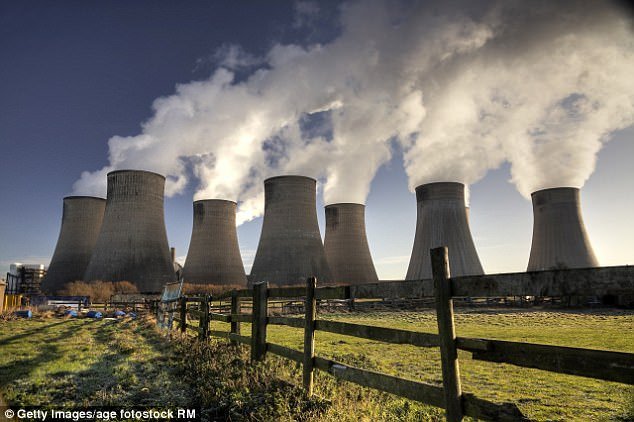Alternative frameworks showing energy waste reduction and increase energy efficiency, bring superior benefits accross all metrics
- Details
- Written by: J C Burke
- Category: Decarbonisation vs Waste Reduction
- Hits: 13
 Climate Ideology will Cost Every Consumer Dearly
Climate Ideology will Cost Every Consumer Dearly
We have looked at this parliamentary briefing [CLICK HERE] to analyze their approach to housing "decarbonization". This is ideological climate policy masquerading as engineering sense. Let us break down the insanity we've identified:
The "Fabric First" Abandonment is Thermodynamically Insane
The parliamentary briefing shows that some organizations like Nesta argue it's not cost-effective to insulate every home to a high standard, and that households should install heat pumps even if their home is poorly insulated. The University of Oxford researchers claim that for many homes the solution will be to put in a heat pump first.
This is fundamentally backwards physics:
Why "Heat Pump First" is Wrong:
- Heat loss is heat loss - Whether you heat with gas, electricity, or magic pixie dust, every watt of heat escaping through poor fabric is wasted energy that costs money
- Bigger heat pumps = higher capital cost - If heat loss is high, the size of the heat pump required increases, making it more expensive, and if the homeowner later makes energy efficiency upgrades, the heat pump can end up being over-specified, leading to systems that use too much power and are difficult to control
- Heat pump efficiency degrades in cold weather - The worse the insulation, the colder the day, the harder the heat pump works, the lower its COP (coefficient of performance), the more electricity it uses
- Running cost comparison flips - A poorly insulated home with a heat pump can cost MORE to heat than the same home with a gas boiler, because:
- Heat pump COP drops to 2-2.5 in very cold weather
- Electricity costs ~3-4x per kWh vs gas
- So 1 kWh of heat from heat pump = ~1.5x the cost of gas boiler heat
The Real Agenda We've Identified:
This is about eliminating gas consumption, not about thermodynamic efficiency or cost: This false agenda is also evident in the OFGEN Consultation Paper - we submitted our response on 17th October 2025 See our article HERE
- Details
- Written by: J C Burke
- Category: Decarbonisation vs Waste Reduction
- Hits: 3584
 Methane Emissions Management will be far more beneficial than trying to reduce CO2
Methane Emissions Management will be far more beneficial than trying to reduce CO2
Well, let's look at the evidence:
"With the 2030 deadline to achieve the Global Methane Pledge to cut methane levels by at least 30% from 2020 levels, signed by 155 countries, now just over 5.5 years away, we need to urgently accelerate the expansion of biogas globally."
"Treating and recycling the 105bn tonnes of organic wastes generated by humans every year, of which 98% remain untreated and emitting methane as they break down, can deliver 50% of the Global Methane Pledge; sufficient green gas to replace one third of today’s fossil gas consumption; replace 105bn tonnes of inorganic fertiliser; provide sufficient nutrient to fertilise 700 million hectares of arable land and create 10-15 million jobs worldwide."
World Biogas Association {WBA} and supported in the UK by The Anaerobic Digestion & Bioresources Association {ADBA}
However the WBA's assertion will not include the other global sources of methane, and here we have a problem. So many claims of the "damage" but no real independent total of this hydro-carbon's presence globally. Indeed the theory of Abiotic Generation would seem to fit the evidence of large scale hydrocarbons in our solar system.
So where else is methane coming from on Earth?
Coal Mine Methane Emissions
DrivingDownCoalMineMethaneEmissions.pdf
Vulcanism
https://www.sciencedirect.com/science/
volcanism million of years ago methane thoughts
Methane Hydrates
Oil and Gas Industry
- Leakage and Failures
- scientists-detect-record-breaking-methane-leak-in-kazakhstan-the-largest-ever-documented
- We can say that there are others in this industry sector
- Natural Sedimentary Basins
- Darvaza Gas Crater
- Can we presume there are others?
Clearly these volumes of methane are astronomical! But no amount of 'government pledges' are going to control most of these naturally occurring 'contributions'! Indeed we should argue that the oil and gas industry needs to 'up their game' and control much more methane than they have done! To put methane to use within the realms of ENERGY PRODUCTION and TRANSPORT Fuels would seem to be a wise move(??).
UPDATE 11th August 2024: However, it has been shown recently that there are Methane 'Sinks'; Methane consuming bacteria has been found within tree bark! All the more reason for re-forestation. by Luke C. Jeffrey, Damien T. Maher, Eleonora Chiri, Pok Man Leung, Philipp A. Nauer, Stefan K. Arndt, Douglas R. Tait, Chris Greening & Scott G. Johnston
"".......Finally, field-based methane oxidation inhibition experiments demonstrate that bark-dwelling MOB [methane-oxidising bacteria] reduce methane emissions by 36 ± 5 %. These multiple complementary lines of evidence indicate that bark-dwelling MOB represent a potentially significant methane sink, and an important frontier for further research.""
Reaserch article citation here at this link {on a new tab}
View, read or Download summary research at this link {See Research Here - again in a new tab}
- Details
- Written by: J C Burke
- Category: Decarbonisation vs Waste Reduction
- Hits: 5667

"I hate cooling towers" is my latest Sun Earth Energy Blog.
Cooling Towers! I hate to see Cooling Towers!!
"A Testimony to Waste" {approx 60% wasted Heat Energy to the Atmosphere!!} Just as my {then Children} will testify, in the mid 1990's as we traveled down the A1 at Ferrybridge {Power Station} - [now demolished].
But it could have supplied a 'Heat Network' to the adjacent town of Knottingly - similar to the Battersea Power Station, that supplied Heat to the Pimlico Estate.
Coal, Gas, Oil or even Nuclear - all use Cooling Towers in respect of the steam turbines to drive the electricity generation: But the Carnot Cycle needs to revert the steam back into water
But the notion of "Centralised Power Generation remains - and there is the problem!
- Details
- Written by: J C Burke
- Category: Decarbonisation vs Waste Reduction
- Hits: 6096
 Richard Blyth is the Head of Policy Practice and Research at the RTPI
Richard Blyth is the Head of Policy Practice and Research at the RTPI
There can be few in the planning world in England who are unaware of what I think it is fair to call a crisis over water quality. It goes by the tongue-twisting title of Nutrient Neutrality. Or you could say making sure that new development is net zero nitrate (or phosphate). To the best of my comprehension it began as a result of a European Court of Justice ruling (remember them?) in 2018 regarding the operation of the EU Habitats Directive (Remember that? Of course you do, it’s still in force). As a result Natural England began issuing directives of its own to local planning authorities, starting in the Solent area of Hampshire stating that no planning permissions for housing could be issued unless applicants could demonstrate that new housing would not add at all to the load of pollution coming out of sewage treatment works. One way of doing this is to create additional wetland habitat to replace the habitat damaged by ongoing pollution.
Anyone familiar with wetlands will soon appreciate that these priceless habitats take some time to be created – it is estimated five years. So mitigation – sorry eliminating – the impact of a single house is not easily achieved. Nevertheless with a lot of creative thinking on the part of local authorities in Hampshire and housebuilders a collective tariff based scheme was devised and it began operation around early 2019.
Sadly the progressive monitoring of Natural England has identified more and more habitats at risk from polluted water and more and more local planning authorities were told to stop granting planning permissions unless Natural England was satisfied about mitigation. First in the Somerset Levels, then in a lot of Herefordshire and Shropshire and parts of Kent. The count reached 74 planning authorities in March 2022, a kind of grand finale. (At least I hope it is a finale.) The Home Builders’ Federation estimates that about 100,000 homes are held up by this policy.
Those with long memories will recall this is not the first time we have had such a crisis. Threats to the Dartford Warbler and other nesting birds held up 40,000 homes around 2007 west of London while Natural England and housebuilders tried (eventually successfully) to find ways to allow people in new homes to walk their dogs without hurting wildlife.
The Government has listened to strong voices of concern from the RTPI, the HBF, the Construction Leadership Council and many others calling for resolution of this problem. In a response to a DEFRA consultation on environmental targets, the RTPI also called recently for more ambitious targets on farming pollution to be set for 2037 than DEFRA is proposing. It does seem strange that it is new housebuilding which is being held almost solely responsible for a problem which is due to both agricultural pollution and also existing sewage.
A Government press release last week proposed a new scheme with (as yet unknown) funding towards the improvement of water treatment works to unblock the flow of new permissions. The Government has also proposed a new “legal duty on water companies in England to upgrade wastewater treatment works by 2030 in ‘nutrient neutrality’ areas to the highest achievable technological levels”. However there has been no announcement regarding the contribution of agriculture.
It is clearly imperative that something is done quickly. The most critical casualties are small building firms dependent on being able to develop sites they have bought, as the Financial Times reported on 18 July (£). But inside the planning profession there are longer term issues. Where local plans depend on allocating land within (what is now deemed) critical river catchments, there is a concern that local plans will be held up for example in Shropshire and Greater Norwich. It seems like the last thing we need is slower local plans.
The RTPI believes that the current state of planning for the environment needs a shake up. We, along with the Broadway Initiative, have been developing the concept of local environment improvement plans (LEIPs) which would bring all the current plans for water, habitats, farming support, air quality and coastal management into a single whole. This would make the key task of aligning environmental plans and local plans a lot easier, which, for example, could mean that plans such as the Greater Cambridge local plan would have a guaranteed water supply to all sites. A starting point for LEIPs could be the Local Nature Recovery Strategies brought in by the Environment Act 2021.
There are so many reasons now why we cannot let environmental planning continue to be a side show. Drought, flood, heat waves, and even sea level rise are all needing long term solutions. And for public health reasons we now know just how important easy access to nature for our own species is - for all of us.
